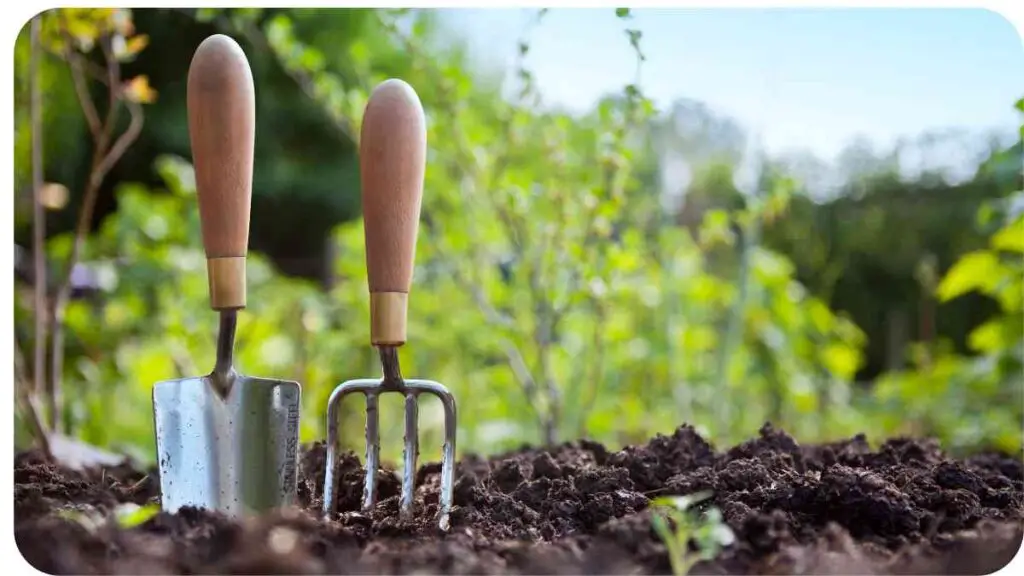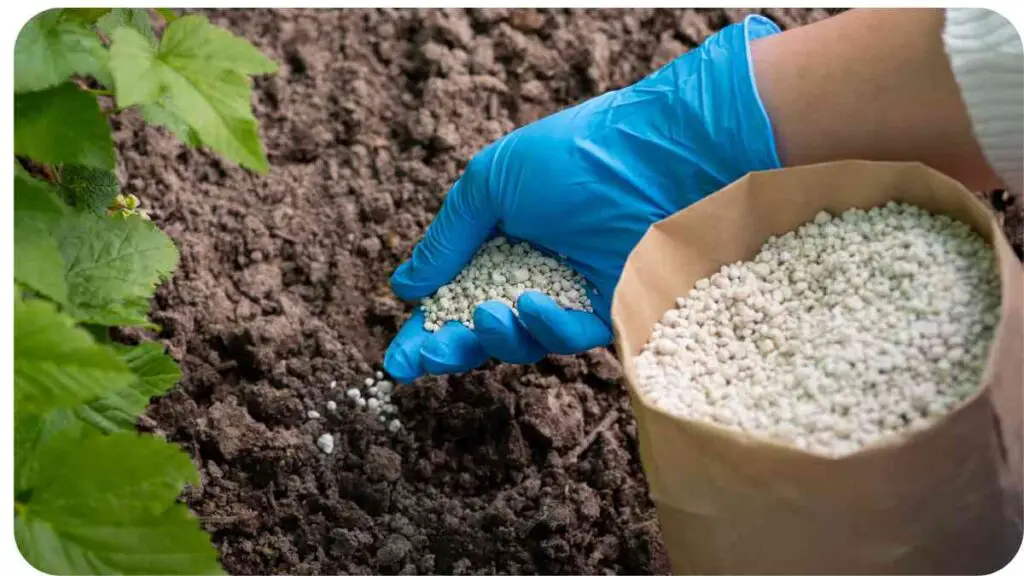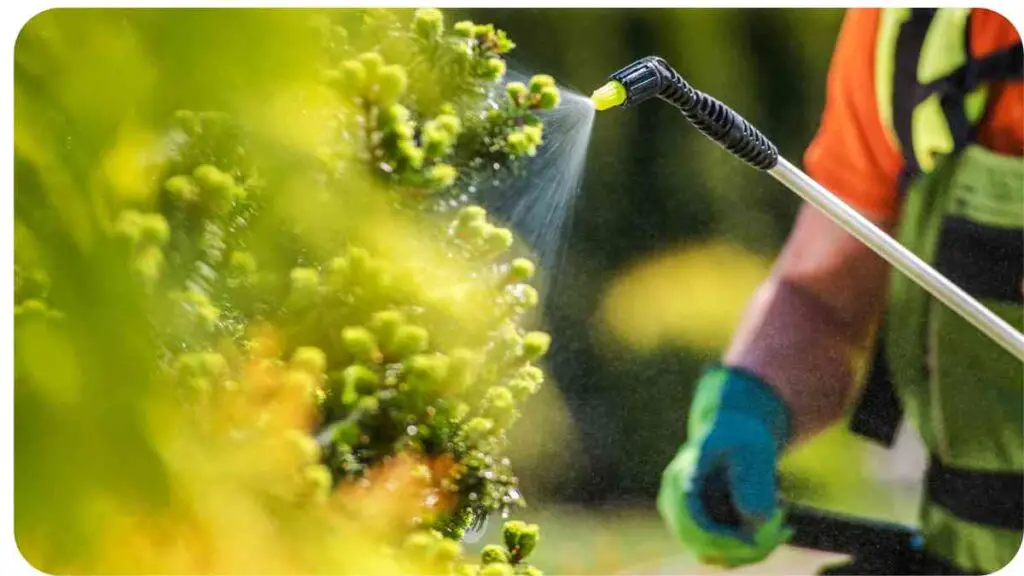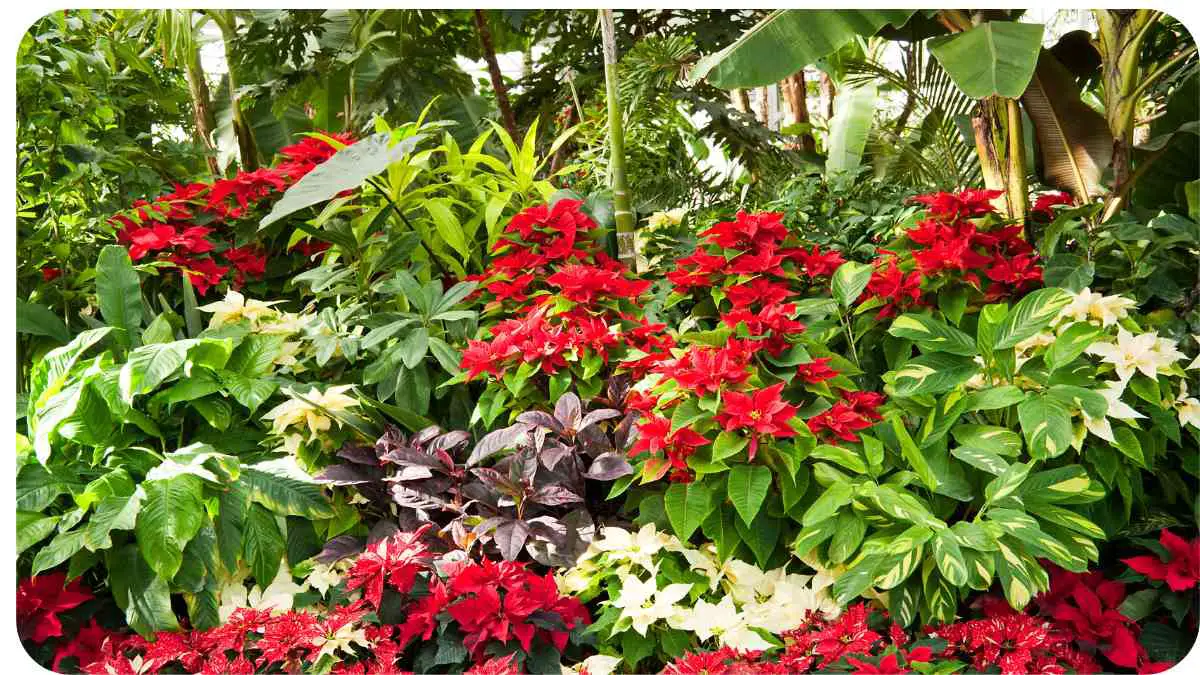Amid holiday festivities, nurturing your garden is crucial for a vibrant spring. Learn to sidestep common Christmas gardening blunders for a flourishing outdoor haven.
From strategic plant rotations to the benefits of mulching and fertilizing, this guide equips you with insights for a healthier, more productive garden. Dive into details and embrace a vibrant landscape this holiday season.
| Takeaways |
|---|
| Gardening mistakes can have a significant impact on the health and productivity of your garden. |
| Common mistakes to avoid include overwatering, not pruning properly, planting too closely together, and not fertilizing the soil enough. |
| Watering frequency should be tailored to the specific needs of each plant, while pruning should be done at the appropriate time. |
| A soil test can help determine whether your soil requires additional nutrients, while good gardening hygiene can help prevent pests and diseases. |
| By avoiding these common mistakes, you can help ensure that your garden thrives and provides you with a beautiful, productive outdoor space. |
Rotate and Revitalize: Prevent Monotony in Your Garden

For gardeners embracing simplicity, here’s a crucial tip: don’t let your plants linger in the same spot indefinitely. It’s a common oversight, forgetting that plants crave change and rotation.
Some plants thrive with an annual relocation, while others flourish for up to three years before craving new soil. If your garden offers ample space and your plants are petite or divisible, create variety by planting different species in rows or blocks. This ensures a yearly influx of fresh crops, ready for a flavorful Christmas harvest. Elevate your gardening game by embracing the art of movement and diversity.
Looking to add some festive plants to your garden this year? Check out our list of the top 10 Christmas plants for some inspiration! From holly to poinsettias, these plants are sure to add some holiday cheer to your outdoor space.
Mulch Magic: Boosting Your Garden’s Health
Unlock the potential of mulch to fortify your soil and enhance your garden’s vitality. This versatile soil companion offers a myriad of benefits:
- Weed Warfare: Mulch acts as a protective shield, warding off relentless weeds that vie for space in your garden.
- Moisture Management: Experience improved moisture retention and ground cooling, essential for the well-being of your plants.
- Erosion Defense: Safeguard your soil from erosion, maintaining its structure and fertility.
Mulch’s allure lies in its adaptability, crafted from diverse materials—be it grass clippings, straw, or shredded bark. Tailor your choice based on preferences, budget, and local availability.
Benefits of Mulching Table
| Benefits of Mulching |
|---|
| Helps retain soil moisture. |
| Reduces soil erosion by preventing runoff. |
| Suppresses weed growth by blocking light. |
| Improves soil fertility as mulch decomposes. |
| Insulates soil, protecting plant roots from extreme temperatures. |
| Enhances the appearance of garden beds. |
If you choose not to use mulch, be aware that you may be missing out on the benefits listed above. Soil may dry out more quickly, erosion may be more of an issue, weeds may be more prevalent, and soil fertility may suffer without the added nutrient-richness that mulch provides. Consider incorporating mulch into your gardening practices to enjoy these benefits and help your garden thrive.
Fertilizer Finesse: Nourishing Your Garden with Precision

While fertilizer is a garden’s lifeblood, moderation is key. Overindulging your plants with excessive fertilizer can lead to detrimental consequences.
The golden rule: apply fertilizer in modest amounts. If your plants display signs of distress—yellowing leaves or stunted growth—excessive fertilization might be the culprit.
Navigate the delicate balance with a fertilizer calculator, a handy tool for determining the optimal dosage. Yet, bear in mind the dynamic factors at play—weather conditions, soil composition, and the age of your plants. These variables influence the nutritional needs of your garden. Embrace the art of precise fertilization to ensure a thriving, healthy haven for your plants
With the colder weather setting in, now is the perfect time to bring some greenery indoors! Our article on the best plants to bring indoors for a cozy Christmas atmosphere offers some great ideas for adding some natural elements to your holiday decor.
Feeding Finesse: Nurturing Your Plants All Season Long
Neglecting your plants’ nutritional needs is a gardening faux pas. Tom Mackey, an expert gardener from Los Angeles, emphasizes the importance of providing the right nourishment at the right intervals.
Contrary to the common practice of a once-a-year feast in spring or fall, Mackey advocates a more frequent approach. To truly cater to your plants’ hunger, administer liquid fertilizer—known for its efficient absorption—four times throughout the growing season. This ensures a steady and balanced supply of nutrients.
Opt for organic fertilizers, steering clear of synthetic alternatives laden with potentially harmful chemicals. By embracing a nuanced feeding schedule and choosing organic options, your garden not only thrives but contributes to a healthier, more sustainable environment. Feed your plants wisely for a season-long spectacle of lush, vibrant greenery.
Water Wisdom: Striking the Right Balance for Your Plants
Water is essential for plant growth, but too much of a good thing can spell disaster for your garden. If you’re new to gardening, mastering the art of watering is paramount.
Overwatering poses a significant risk, leading to dreaded root rot and eventual plant demise. Saturated soil impedes proper root development and invites disease and fungus, tarnishing your garden’s allure.
To steer clear of this predicament:
- Minimize leaf watering, focusing on the soil around the base of the plant.
- Monitor your plants closely. If you notice wilting despite healthy roots, consider adding compost for improved drainage.
- Establish a watering schedule aligned with your region’s rainfall patterns and sun exposure. Adapt your regimen to changing conditions, ensuring your plants receive adequate hydration without drowning them.
Want to make sure your Christmas gardening goes smoothly? Our article on gardening secrets for a perfect Christmas offers 13 expert tips to help you avoid common mistakes and make the most out of your holiday gardening.
Hydration Harmony: Ensuring Adequate Water for Your Plants
Regular watering is vital for plant well-being, but determining the right time can be a puzzle. Fear not, for a few simple tricks can guide you.
- Moisture Meter Mastery: Invest in a moisture meter for precise hydration control. Aim to keep the soil consistently moist, providing your plants with the ideal environment for growth.
- Finger Test: In the absence of a moisture meter, rely on a tactile approach. Insert your finger into the soil; if it feels dry, it’s time to shower your plant with some love.
- Guard Against Overwatering: Don’t shy away from generous watering; plants often benefit from a good soak. However, if the soil becomes too saturated, delicately address the excess. Employ a towel or cloth to gently absorb surplus water around the roots, ensuring a balanced moisture level without disrupting the plant.
Effects of Not Watering Plants Table
| Effects of Not Watering Plants |
|---|
| Stunted growth or wilting. |
| Dry, brown or yellow leaves. |
| Drooping or withering leaves. |
| Increased susceptibility to pests and disease. |
| Reduced plant survival rate. |
It is important to water plants regularly to avoid the negative effects listed above. To determine when it’s time to water, you can use a moisture meter to measure the soil’s moisture level, or simply stick your finger in the soil. If it feels dry, it’s time to water. Keep in mind that different plants have different water needs, so research the specific watering requirements for the plants in your garden to ensure they are getting the right amount of water.
Space Harmony: Crafting a Balanced Garden Ecosystem
When it comes to planting, the key consideration is ample space for each green resident. Overcrowding, often underestimated, can lead to root entanglements and hinder growth.
Navigate this challenge with strategic planning:
- Mindful Spacing: Before planting, gauge the space each plant requires. Be mindful of their spatial needs to avoid overcrowding-related issues.
- Zoning Wisdom: In expansive gardens, divide and conquer. Create distinct sections for various plant types or species. For instance, allocate one area for shrubs and another for flowering perennials. This not only promotes aesthetic diversity but also streamlines maintenance.
- Efficient Maintenance: Zoning facilitates targeted care. If specific sections demand more attention, such as weeding or watering, this approach minimizes the need to traverse the entire garden repeatedly.
If you’re looking to create a dazzling light display in your garden this Christmas, our guide on how to create a magical Christmas light display is sure to come in handy! From choosing the right lights to creating a festive ambiance, this article has all the tips you need.
Breathable Soil: Elevating Your Garden’s Vitality
Soil aeration is a cornerstone of plant health, fostering an environment where they can thrive. Here’s why it’s crucial:
- Oxygen-Carbon Dance: Plants rely on oxygen and release carbon dioxide. Aeration facilitates this essential exchange, ensuring your green companions receive the respiratory elements they need.
- Water Management: Beyond air, soil aeration aids in water regulation. It prevents waterlogged conditions, safeguarding your plants from drowning and fostering optimal moisture balance.
For a Christmas-ready soil aerating session:
- Tool Choices: Opt for a spade or, if you’re new to gardening, an aerator tool for efficiency.
- Simple Process: Dig up sections of soil about 2-3 inches deep and replace it with fresh soil.
- Routine Care: Repeat this process every couple of months, aligning with your gardening frequency.
Pruning Precision: Cultivating Healthy Growth
Pruning stands as a cornerstone of gardening, nurturing plant health and vitality. Here’s why it’s indispensable:
- Health Maintenance: Pruning promotes plant well-being by enhancing air circulation and light penetration, thwarting disease and pest infestations.
- Enhanced Yield: By judiciously removing dead or damaged branches, pruning encourages robust growth and increased yields, fostering a bountiful harvest.
- Protection from Elements: Trimming aids in fortifying plants against the elements, preventing damage from wind, snow, and ice, ensuring their resilience in adverse conditions.
- Selective Precision: Utilize selective pruning to sculpt larger plants, like conifers, fostering new growth and maintaining aesthetic appeal.
As you embark on your pruning journey, remember:
- Timing Matters: Prune when necessary, focusing on dead or damaged branches.
- Safety First: Shield yourself with thick or heavy gloves, especially when handling thorny plants.
If you’re looking to give your flower pots a weathered, rustic feel, our article on how to age flower pots has got you covered! With methods ranging from using paint to burying pots in the ground, this article offers some creative ways to achieve the look you want.
Wildlife Harmony: Nurturing Nature’s Role in Your Garden

While wildlife proves advantageous for fruit tree enthusiasts through pollination, its impact on non-food crops can be less desirable, hindering the aesthetics of your garden. Strike a balance with these insights:
- Fruitful Collaboration: If growing fruit trees, welcome wildlife as allies in pollination. Their presence contributes to a bountiful harvest.
- Caution Without Crops: In gardens without food crops, wildlife can pose challenges, potentially damaging plants and deterring human visitors. Mitigate this by establishing barriers, such as fencing, to protect vulnerable areas.
- Pest Control Allies: Recognize the beneficial role of wildlife in pest control. They naturally regulate pests, contributing to a healthier garden ecosystem.
- Soil Aeration Benefits: Wildlife, through activities like nesting and burrowing, inadvertently aerates the soil. This process enhances soil health by facilitating oxygen circulation and preventing conditions conducive to harmful bacterial growth.
Strategic Planting: Ensuring Success in Your Garden
Creating a visually stunning garden hinges on thoughtful plant placement. Consider these vital factors for optimal growth:
- Sunlight Savvy: Gauge each plant’s sunlight requirements. Some crave full sun, while others thrive in partial shade. Ensure your garden layout aligns with these needs to promote healthy growth.
- Water Wisdom: Factor in water requirements. Assess how much water each plant prefers and strategize placement accordingly. In containers, prioritize those with good drainage to prevent waterlogging.
- Container Caution: When using containers, prioritize those with effective drainage systems. This safeguards plants from excess water, fostering a balanced moisture level.
- Soil Compatibility: Plants have specific soil preferences. Whether it’s rich loamy soil or well-draining sandy soil, tailor your planting spots to meet these needs. If uncertain, seek guidance to determine the ideal soil for your green companions.
- Climate Consciousness: Consider your garden’s climate zone. Understanding the specific climate ensures a harmonious environment for all plants, fostering a thriving ecosystem.
Gardening Know-How: Paving the Path to Green Success
Embarking on a gardening journey without prior knowledge can lead to pitfalls. Here’s why reading up on gardening tips is pivotal:
- Soil, Sunlight, and Plant Compatibility: Your soil type, sunlight exposure, and regional climate profoundly impact plant success. Preempt potential challenges by delving into gardening tips, ensuring informed decisions on plant selection and placement.
- Smart Planting Decisions: Armed with insights into your garden’s unique conditions, you’ll make strategic choices on what to plant and where. This knowledge safeguards against mismatched plants struggling in unsuitable environments.
- Caring Wisdom: Learning how to care for plants preemptively averts costly blunders. Avoid common mistakes like transplanting perennials into poorly drained areas by assimilating tips on proper plant maintenance.
Planting Proficiency: Navigating Soil, Sunlight, and Climate Dynamics
The success of your garden hinges on the judicious selection of plants, considering three pivotal factors: soil type, sunlight, and climate. Here’s why this trifecta is crucial:
- Soil Symphony: Tailor plant choices to your soil type. Whether it’s loamy richness or well-draining sandy soil, aligning plants with their soil preferences ensures optimal growth.
- Sunlight Sensibility: Gauge your garden’s sunlight conditions. Different plants thrive in varying light exposures, be it full sun, partial shade, or shade. Strategically placing plants based on their sunlight preferences fosters a harmonious garden.
- Climate Consciousness: Consider your region’s climate. Plants acclimate differently to varied climates, impacting their growth and overall health. Choose plants resilient to your climate zone for a thriving, resilient garden.
For precision in plant selection:
- Desert Wisdom: In arid regions, opt for plants with shallow root systems to access water easily. In swampy areas, prioritize plants that can thrive in high rainfall but poor drainage conditions.
- Local Expertise: If unsure about your climate zone or sunlight variations, seek guidance from local greenhouse experts or garden center specialists. Their insights will guide you in choosing plants poised for success in your specific environment.
Conclusion
In the realm of gardening, expertise isn’t a prerequisite for crafting a captivating outdoor haven. Simple yet mindful practices can transform your space into a flourishing retreat that endures the seasons with grace.
Remember, even as a novice gardener or a casual enthusiast, you hold the power to nurture a beautiful and enduring landscape. By embracing straightforward techniques and a touch of conscientiousness, your garden can thrive with minimal effort.
As you embark on your gardening journey, cherish the process and the transformative power it brings to your outdoor sanctuary. With each mindful step, you enrich not only your garden but also your connection to nature.
May your garden blossom with the vibrancy of your care and attention, becoming a cherished sanctuary for all who encounter its beauty.
Further Reading
Here are some additional articles to help you up your gardening game:
5 Gardening Mistakes to Avoid This Fall: This article from Southern Living offers tips on how to keep your garden healthy and vibrant as the seasons change.
Spring Garden Prep: Mistakes to Avoid: Another great article from Southern Living, this one focuses on common mistakes to avoid when prepping your garden for spring.
Gardening Mistakes to Avoid: Architectural Digest offers up some expert gardening tips to help you avoid common missteps and get the most out of your garden.
FAQs
What are some common gardening mistakes to avoid?
Some common gardening mistakes to avoid include overwatering your plants, not pruning them properly, planting too closely together, and not fertilizing the soil enough.
How often should I water my plants?
The frequency with which you should water your plants depends on the type of plant, soil conditions, and climate. In general, most plants need to be watered deeply once or twice a week.
When should I prune my plants?
The best time to prune plants varies depending on the type of plant. For most flowering shrubs and trees, the ideal time to prune is in late winter or early spring, while for fruit trees, it’s best to prune in late winter or early summer.
How can I tell if my soil needs fertilizer?
There are several signs that your soil may need fertilizer, such as stunted growth, yellowing leaves, and poor flowering or fruiting. Additionally, a soil test can help you determine what nutrients your soil is lacking.
How can I prevent pests and diseases in my garden?
To prevent pests and diseases from taking hold in your garden, it’s important to keep your plants healthy and well-maintained, and to practice good gardening hygiene, such as regularly removing dead leaves and debris. Using natural pest control methods and avoiding over-fertilizing can also help.

Hi! My name is Hellen James, and I’m here to help you with your home-maintenance needs. Whether it’s building a better yard or just trying to fix a garden—I can show you how.


